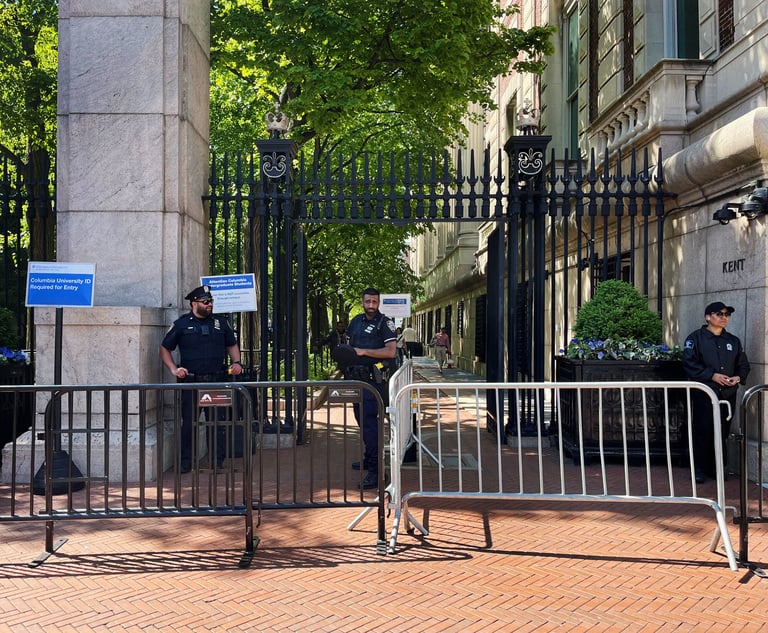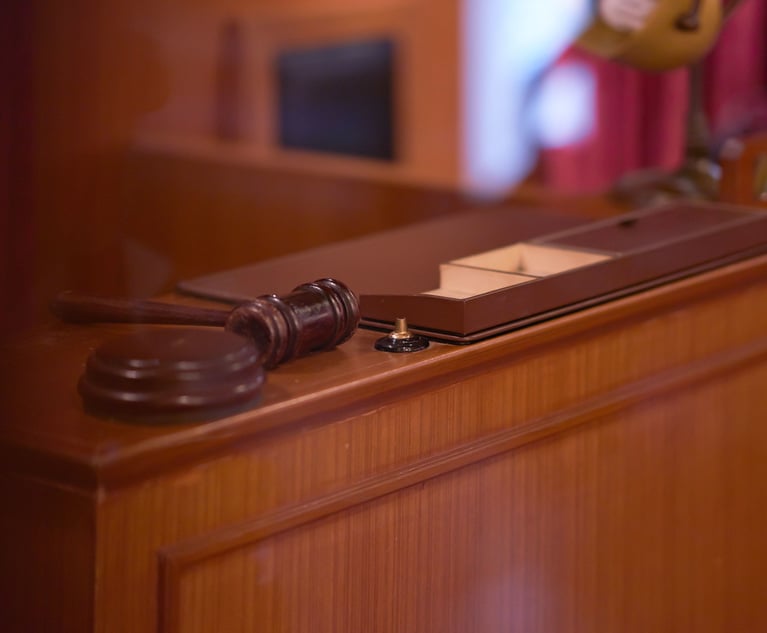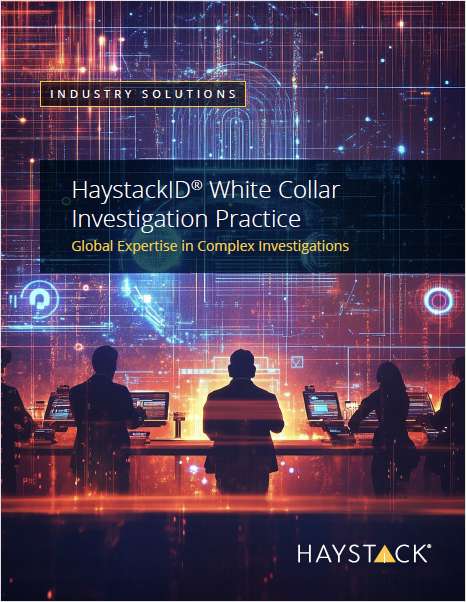Ahead of the Curve: A Law School and an Assassin
This week's Ahead of the Curve looks at the University of North Texas Dallas College of Law's new campus and its ties to presidential assassin Lee Harvey Oswald, as well as Yale Law School's decision to accept the GRE and what that means.
July 30, 2019 at 11:06 AM
8 minute read
Welcome back to Ahead of the Curve. I'm Karen Sloan, legal education editor at Law.com, and I'll be your host for this weekly look at innovation and notable developments in legal education.
This week, I'm paying a virtual visit to the University of North Texas Dallas College of Law's newly restored campus, which played a big role in the events following JFK's 1963 assassination. Next up is a look at Yale Law School'sdecision to accept GRE scores in admissions and why elite law schools have been quicker to adopt the alternative exam than their lower-ranking counterparts.
Please share your thoughts and feedback with me at [email protected] or on Twitter: @KarenSloanNLJ

A Law School, And An Assassin
The University of North Texas Dallas College of Law is the newest law school to be accredited by the American Bar Association, but its freshly renovated campus has some serious history.
Here's the deal: UNT Law has been housed in a downtown university building since opening in 2013, but next month classes will commence in the school's new digs—the gorgeous 1914 Beaux Arts-style Dallas Municipal Building. If that name rings a bell, it's because that building played a big role in the 1963 assassination of President John F. Kennedy. It previously housed the old Dallas County Jail, where Lee Harvey Oswald was held for two days after shooting and killing Kennedy on Nov. 22. The building's basement garage is also where Jack Ruby fatally shot Oswald days later. Like I said, that's some serious history.
In its (first) prime, the building also housed Dallas City Hall and the Dallas Police Department. Those entities eventually relocated and by 2003 only municipal courts remained in the partially abandoned structure. City officials began thinking about how it could be repurposed and reinvigorated. Fast forward to 2019, and a consortium of groups have pumped $71 million into the historic building to transform it into a modern law school—with a few twists, but I'll get to those in a minute. First, the city spent $14 million to restore the building's façade. And the University of North Texas invested $53 million to overhaul the interior—working closely with historic preservationists. Renovations on the more than 100,000 square-foot law campus took two years. It has all the bells and whistles you'd expect in a new law campus like a large trial courtroom and energy efficiency, with some historic bonuses, including:
➤➤A preserved block of jail cells on the fifth floor where Oswald was held, which look like a time capsule from 1963, complete with sea-foam green walls pocked with graffiti from inmates.
➤➤A preserved wall that served as the backdrop of Oswald's mugshot.
➤➤A preserved captain's office where Oswald was interrogated as well as a preserved elevator used to move inmates.
➤➤The former chambers of the Dallas City Council have also been restored and will now serve as a classroom.
➤➤Numerous other historic elements have been restored of preserved, including marble corridors, plaster cornices and wood doors and trim.
Now I haven't toured the renovated building yet, but the photos look incredible. (The university held an official ribbon-cutting ceremony last month.) It seems the school has struck the right balance between modernizing and giving students a 21st century legal education while also retaining what makes this new location so special and significant. The school plans to make the Oswald features open to the public, at least on a limited basis. Here's what Dean Felecia Epps had to say about that:
“Although we want the public to have access, we have to preserve the education of the students,” Epps said. “There will be a plan developed where the public, at very limited times, will have access to that.”
Not only that, but plans are in the works for a 2,500-square-foot museum housed in the basement, to open next year. You can imagine that it will be far less disruptive to the school's operations to have visitors directed to the basement, rather than traipsing through the middle of its campus. Kudos to the forward-thinking politicians and administrators who pulled this one off.

Yale Law Joins the GRE Party
Another day, another law school announces it will accept GRE scores from applicants. At least that's how I've been feeling lately, now that some 43 ABA-accredited law schools are allowing applicants to submit either LSAT or GRE scores. We're tantalizingly close to reaching the 25 percent threshold. All of which is to say it's hard to get excited about each new announcement.
Then again, Yale is not your run-of-the mill law school. So naturally I sat up and took note last week when the nation's No. 1-ranked law school casually dropped that it has boarded the GRE train. There wasn't much fanfare, but Yale Law's admissions office tweeted out that it would accept GRE scores once its next admissions cycle opens on Oct. 1. There isn't much information on the school's website, other than a clarification that it wants to see each of the applicant's GRE scores earned in the previous five years—a bid to maintain parity between those applying with LSAT scores.
Since we know the legal profession is obsessed with prestige, here's a stat that is bound to raise some eyebrows: Eight of U.S. News & World Report's top 10 law schools now accept GRE scores. (This is a little confusing because there are actually 12 schools in the top 10, thanks for a three-way tie at No. 10.) The holdouts are Stanford Law School; the University of Michigan Law School; Duke Law School; and the University of California, Berkeley School of Law. If you extend that out to the much-discussed T-14 schools, we're at 10 of 14 accepting the GRE—edging up to three-quarters. Harvard became the first elite school to accept the GRE, in 2017.
My thoughts: While it's an interesting development, Yale's embrace of the GRE isn't going to create a sea change the way Harvard's did two years ago. (Harvard was the second to accept GRE scores, after the University of Arizona James E. Rogers College of Law.)
There's a few reasons for that. As I pointed out earlier, the GRE horse left the barn a long time ago. Most top schools have already come around so there isn't much change left to spur. Second, Yale has always played in its own sandbox.It's a unique school with unique aims and a pretty small, eclectic student body. For better or worse, I just don't see other campuses rushing to emulate Yale in many ways, because it exists largely in its own sphere. And for the most part, the schools that aren't accepting the GRE are clustered in the middle and bottom of the law school rankings—which means they have even less common ground with elite Yale.
When you think about it, it makes sense that the top schools have been quicker to sign on to the GRE. They have lower acceptance rates and can afford to be picky about who they let in the door. That is—they'll be sure that anyone who gets in with a GRE score will also have other strong credentials and will be likely to thrive. But many lower-tier schools don't have the luxury of being so selective—thus accepting the GRE is a riskier prospect. We don't have any data thus far on how GRE scores compare with LSAT scores when correlated to, say, bar pass rates or law school completion rates. So if I'm the dean of a struggling law school, I'd think long and hard about what accepting the GRE could mean for my all-important bar pass rate, or even my academic attrition rate.
Even with so many schools now accepting the GRE, the percentage of people getting in with the alternative exam is miniscule. That means it will be quite a while until we have robust data on how they fared. This is still very much a movement in its infancy.
|
Extra Credit Reading
Penn law professor Amy Wax took center stage last week, with dean Ted Rugercondemning her recent comments on immigration as racists and thrusting the school into a debate over campus free speech.
Would be law students seem fairly pleased with the new digital LSAT. The exam earned high marks from test takers for its technology, gripes about the stylus notwithstanding.
The State Bar of California released the topics of the upcoming bar exam essay questions to all takers over the weekend, apparently in an effort to level the playing field after accidentally disclosing the topics to some law deans.
Thanks for reading Ahead of the Curve. Sign up for the newsletter and check out past issues here.
I'll be back next week with more news and updates on the future of legal education. Until then, keep in touch at [email protected]
This content has been archived. It is available through our partners, LexisNexis® and Bloomberg Law.
To view this content, please continue to their sites.
Not a Lexis Subscriber?
Subscribe Now
Not a Bloomberg Law Subscriber?
Subscribe Now
NOT FOR REPRINT
© 2024 ALM Global, LLC, All Rights Reserved. Request academic re-use from www.copyright.com. All other uses, submit a request to [email protected]. For more information visit Asset & Logo Licensing.
You Might Like
View All



Trending Stories
- 1Attorneys ‘On the Move’: Morrison Cohen Adds White Collar Partner; Corporate/Securities Partner Joins Olshan
- 2Jury Says $118M: Netlist Wins Another Patent Verdict Against Samsung
- 3Big Law Communications, Media Attorneys Brace For Changes Under Trump
- 4Will England Accept that Digital Assets Are ‘Property’?
- 5Congress and Courts Are Considering Litigation Financing: Is Disclosure Imminent?
Who Got The Work
Michael G. Bongiorno, Andrew Scott Dulberg and Elizabeth E. Driscoll from Wilmer Cutler Pickering Hale and Dorr have stepped in to represent Symbotic Inc., an A.I.-enabled technology platform that focuses on increasing supply chain efficiency, and other defendants in a pending shareholder derivative lawsuit. The case, filed Oct. 2 in Massachusetts District Court by the Brown Law Firm on behalf of Stephen Austen, accuses certain officers and directors of misleading investors in regard to Symbotic's potential for margin growth by failing to disclose that the company was not equipped to timely deploy its systems or manage expenses through project delays. The case, assigned to U.S. District Judge Nathaniel M. Gorton, is 1:24-cv-12522, Austen v. Cohen et al.
Who Got The Work
Edmund Polubinski and Marie Killmond of Davis Polk & Wardwell have entered appearances for data platform software development company MongoDB and other defendants in a pending shareholder derivative lawsuit. The action, filed Oct. 7 in New York Southern District Court by the Brown Law Firm, accuses the company's directors and/or officers of falsely expressing confidence in the company’s restructuring of its sales incentive plan and downplaying the severity of decreases in its upfront commitments. The case is 1:24-cv-07594, Roy v. Ittycheria et al.
Who Got The Work
Amy O. Bruchs and Kurt F. Ellison of Michael Best & Friedrich have entered appearances for Epic Systems Corp. in a pending employment discrimination lawsuit. The suit was filed Sept. 7 in Wisconsin Western District Court by Levine Eisberner LLC and Siri & Glimstad on behalf of a project manager who claims that he was wrongfully terminated after applying for a religious exemption to the defendant's COVID-19 vaccine mandate. The case, assigned to U.S. Magistrate Judge Anita Marie Boor, is 3:24-cv-00630, Secker, Nathan v. Epic Systems Corporation.
Who Got The Work
David X. Sullivan, Thomas J. Finn and Gregory A. Hall from McCarter & English have entered appearances for Sunrun Installation Services in a pending civil rights lawsuit. The complaint was filed Sept. 4 in Connecticut District Court by attorney Robert M. Berke on behalf of former employee George Edward Steins, who was arrested and charged with employing an unregistered home improvement salesperson. The complaint alleges that had Sunrun informed the Connecticut Department of Consumer Protection that the plaintiff's employment had ended in 2017 and that he no longer held Sunrun's home improvement contractor license, he would not have been hit with charges, which were dismissed in May 2024. The case, assigned to U.S. District Judge Jeffrey A. Meyer, is 3:24-cv-01423, Steins v. Sunrun, Inc. et al.
Who Got The Work
Greenberg Traurig shareholder Joshua L. Raskin has entered an appearance for boohoo.com UK Ltd. in a pending patent infringement lawsuit. The suit, filed Sept. 3 in Texas Eastern District Court by Rozier Hardt McDonough on behalf of Alto Dynamics, asserts five patents related to an online shopping platform. The case, assigned to U.S. District Judge Rodney Gilstrap, is 2:24-cv-00719, Alto Dynamics, LLC v. boohoo.com UK Limited.
Featured Firms
Law Offices of Gary Martin Hays & Associates, P.C.
(470) 294-1674
Law Offices of Mark E. Salomone
(857) 444-6468
Smith & Hassler
(713) 739-1250








